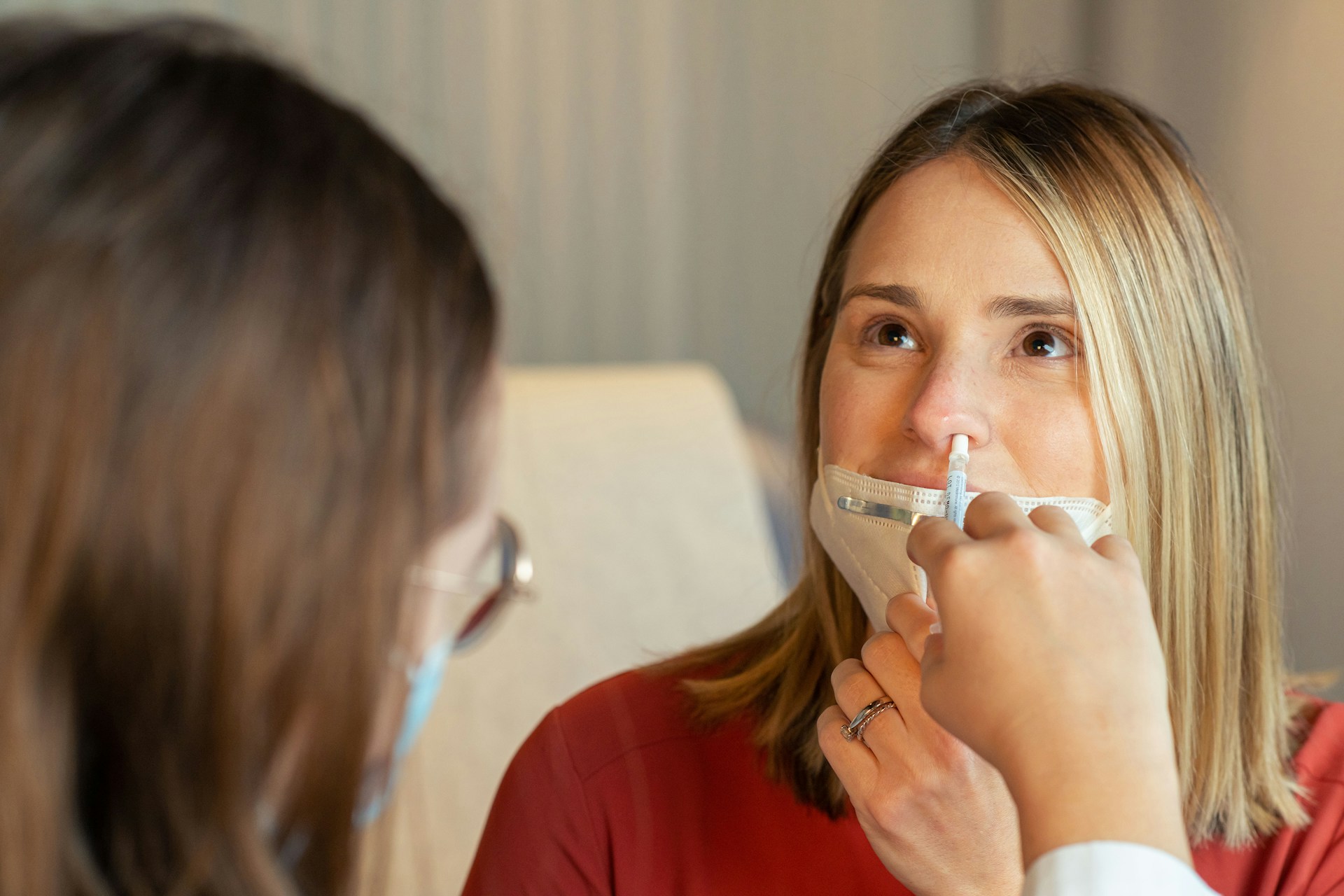Report on Nasal Vaccine Development and its Contribution to Sustainable Development Goals
Introduction: Aligning Vaccine Innovation with Global Health Targets
The development of novel vaccine delivery systems represents a critical frontier in global public health, directly supporting the achievement of Sustainable Development Goal 3 (SDG 3): Good Health and Well-being. While conventional injectable vaccines are effective at preventing disease, their limited ability to prevent pathogen transmission poses a significant challenge to controlling the spread of infectious diseases. This report examines the potential of nasal vaccines to address this gap by inducing immunity at the primary point of pathogen entry, thereby contributing to SDG Target 3.3, which aims to end the epidemics of communicable diseases.
The NOSEVAC Project: A Strategic Initiative for SDG 3 and SDG 9
The NOSEVAC project, a European Union-funded initiative coordinated by the European Vaccine Initiative (EVI), is at the forefront of developing next-generation nasal vaccines. This €11.6 million project exemplifies a commitment to SDG 9 (Industry, Innovation, and Infrastructure) by fostering advanced scientific research and technological development to solve pressing global health problems.
Core Objectives and Alignment with SDGs
The project’s primary objective is to establish a versatile platform for nasal vaccines, initially focusing on key respiratory pathogens. This work is structured around several key goals that support universal health coverage and disease prevention:
- To identify immunological mechanisms for long-term protection of the upper respiratory tract, enhancing the efficacy of public health interventions.
- To develop and refine technologies for the effective delivery of vaccines through the nasal cavity, a key innovation for improving vaccine accessibility (SDG 3.8).
- To assess the acceptability of nasal vaccination among the public and healthcare professionals to ensure successful implementation and uptake.
Targeted Pathogens
The research specifically targets pathogens of significant public health concern, including:
- Streptococcus pneumoniae
- Bordetella pertussis
- Influenza viruses
- SARS-CoV-2
By focusing on these diseases, the project aims to reduce their global burden, a direct contribution to SDG 3.
Technological Innovation and Scientific Hurdles
Leveraging RNA Technology for a Novel Vaccine Platform
NOSEVAC is exploring the use of mRNA technology to trigger mucosal immunity. Unlike traditional vaccines, this approach uses the body’s cellular machinery to produce a target protein, which then elicits an immune response. This innovative platform aligns with SDG Target 9.5, which calls for enhancing scientific research and upgrading technological capabilities. The goal is to create a flexible system that can be rapidly adapted to a wide range of respiratory diseases.
Key Challenges in Development
The project addresses significant scientific challenges to ensure the creation of safe and effective health technologies:
- Delivery System: A primary challenge is protecting the fragile mRNA molecule and ensuring its successful delivery across the nasal mucosal barrier to reach its target cells.
- Safety and Efficacy: Researchers must achieve a precise balance between a robust protective immune response and an excessive inflammatory response. Ensuring the vaccine does not adversely affect the central nervous system via the olfactory bulb is a paramount safety consideration, crucial for developing technologies that promote well-being under SDG 3.
Implications for Global Health and Sustainable Development
Enhancing Vaccine Equity and Accessibility
The development of a painless, easily administered nasal vaccine could significantly improve vaccine uptake and reduce the burden on healthcare systems. This advancement supports the principle of universal health coverage (SDG 3.8) by making vaccination quicker and more acceptable to a broader population, including those with a fear of needles.
Strengthening Partnerships for the Goals (SDG 17)
The NOSEVAC project is a 13-member consortium, demonstrating the power of multi-stakeholder partnerships as envisioned in SDG 17. This collaboration brings together expertise from various sectors to advance scientific knowledge and develop solutions for global challenges.
Conclusion
The research into nasal vaccines, spearheaded by the NOSEVAC project, represents a significant step toward a new paradigm in infectious disease control. By focusing on preventing transmission at the point of entry, this innovative approach has the potential to profoundly impact global health security. Its success would mark a substantial contribution to achieving multiple Sustainable Development Goals, particularly SDG 3, by providing a more effective tool to combat communicable diseases and promote health and well-being for all.
Analysis of Sustainable Development Goals in the Article
1. Which SDGs are addressed or connected to the issues highlighted in the article?
The article on the NOSEVAC project connects to several Sustainable Development Goals (SDGs), primarily focusing on health, innovation, and collaboration.
- SDG 3: Good Health and Well-being: This is the most central SDG addressed. The entire article revolves around developing new vaccines to prevent infectious diseases and their transmission, which is a core component of ensuring healthy lives and promoting well-being for all at all ages. The project specifically targets respiratory diseases like influenza and COVID-19.
- SDG 9: Industry, Innovation, and Infrastructure: The article highlights significant investment in scientific research and technological development. The NOSEVAC project is described as an “€11.6 million EU research project” aimed at creating a “versatile new platform using RNA technology.” This focus on advanced research, innovation, and developing new technological solutions directly aligns with the goals of SDG 9.
- SDG 17: Partnerships for the Goals: The article emphasizes the collaborative nature of the NOSEVAC project. It is described as being “coordinated by the European Vaccine Initiative (EVI)” and involves a “13-member consortium.” This multi-stakeholder partnership, funded by the EU, exemplifies the collaborative approach needed to tackle global challenges like infectious diseases, which is the essence of SDG 17.
2. What specific targets under those SDGs can be identified based on the article’s content?
Based on the article’s focus, several specific SDG targets can be identified:
-
Target 3.3: End epidemics of communicable diseases.
- The article states that a major problem with current vaccines is that they “don’t usually stop transmission.” The “overarching objective of NOSEVAC is to discover ways to elicit protective immunity at the point of entry,” thereby reducing the spread of communicable diseases like influenza, COVID-19, and those caused by Streptococcus pneumoniae and Bordetella. This directly contributes to the goal of ending epidemics.
-
Target 3.b: Support research and development of vaccines.
- The NOSEVAC project is a clear example of this target in action. It is an €11.6 million research initiative dedicated to exploring “how nasal vaccines could be developed to prevent infectious diseases.” The project’s focus on developing a “new RNA vaccine platform” is a direct investment in the research and development of new vaccine technologies.
-
Target 9.5: Enhance scientific research and encourage innovation.
- The article details a sophisticated scientific endeavor to overcome challenges in vaccine delivery, such as finding ways to “encapsulate mRNA that will protect it and allow it to cross the respiratory mucosal barrier.” This effort to develop a novel RNA technology platform for a wide range of respiratory diseases is a direct contribution to enhancing scientific research and fostering innovation.
-
Target 17.16: Enhance the global partnership for sustainable development.
- The structure of the NOSEVAC project, a “13-member consortium” led by the European Vaccine Initiative (EVI) and funded by the EU, is a model of a multi-stakeholder partnership. It mobilizes financial resources (€11.6 million), knowledge, and expertise to achieve a common health goal, aligning perfectly with this target.
3. Are there any indicators mentioned or implied in the article that can be used to measure progress towards the identified targets?
Yes, the article contains several explicit and implicit indicators for measuring progress:
-
For Target 3.3 (End epidemics):
- An implied indicator is the reduction in transmission rates of respiratory diseases like influenza and SARS-CoV-2. The success of the project would be measured by its ability to create vaccines that “prevent transmission,” not just disease.
-
For Target 3.b (Support R&D):
- A direct indicator is the amount of financial resources dedicated to vaccine research, explicitly stated as the “€11.6 million EU research project.”
- Another indicator is the development of new technologies, such as the “versatile new platform using RNA technology” that the project aims to create.
-
For Target 9.5 (Enhance research):
- The total expenditure on research and development is indicated by the project’s €11.6 million budget.
- The number of researchers or participating institutions is indicated by the “13-member consortium,” which serves as a measure of the human resources dedicated to innovation.
-
For Target 17.16 (Partnerships):
- The existence and scale of the multi-stakeholder partnership itself is an indicator. The article specifies the partnership involves the European Vaccine Initiative (EVI), the EU, and a 13-member consortium.
- The financial resources mobilized through the partnership (€11.6 million) is another key indicator of its effectiveness.
SDGs, Targets, and Indicators Table
| SDGs | Targets | Indicators Identified in the Article |
|---|---|---|
| SDG 3: Good Health and Well-being |
3.3: End the epidemics of communicable diseases.
3.b: Support the research and development of vaccines and medicines. |
– Reduction in transmission rates of targeted infectious diseases (influenza, SARS-CoV-2, etc.). – Financial investment in vaccine R&D (€11.6 million for the NOSEVAC project). – Development of a new RNA vaccine platform technology. |
| SDG 9: Industry, Innovation, and Infrastructure | 9.5: Enhance scientific research, upgrade technological capabilities, and encourage innovation. |
– Total research and development expenditure (€11.6 million project budget). – Number of participating institutions in the research consortium (13 members). |
| SDG 17: Partnerships for the Goals | 17.16: Enhance the global partnership for sustainable development, complemented by multi-stakeholder partnerships. |
– Number of partners in the multi-stakeholder consortium (13 members, led by EVI). – Financial resources mobilized through the partnership (€11.6 million from the EU). |
Source: vaccinestoday.eu







